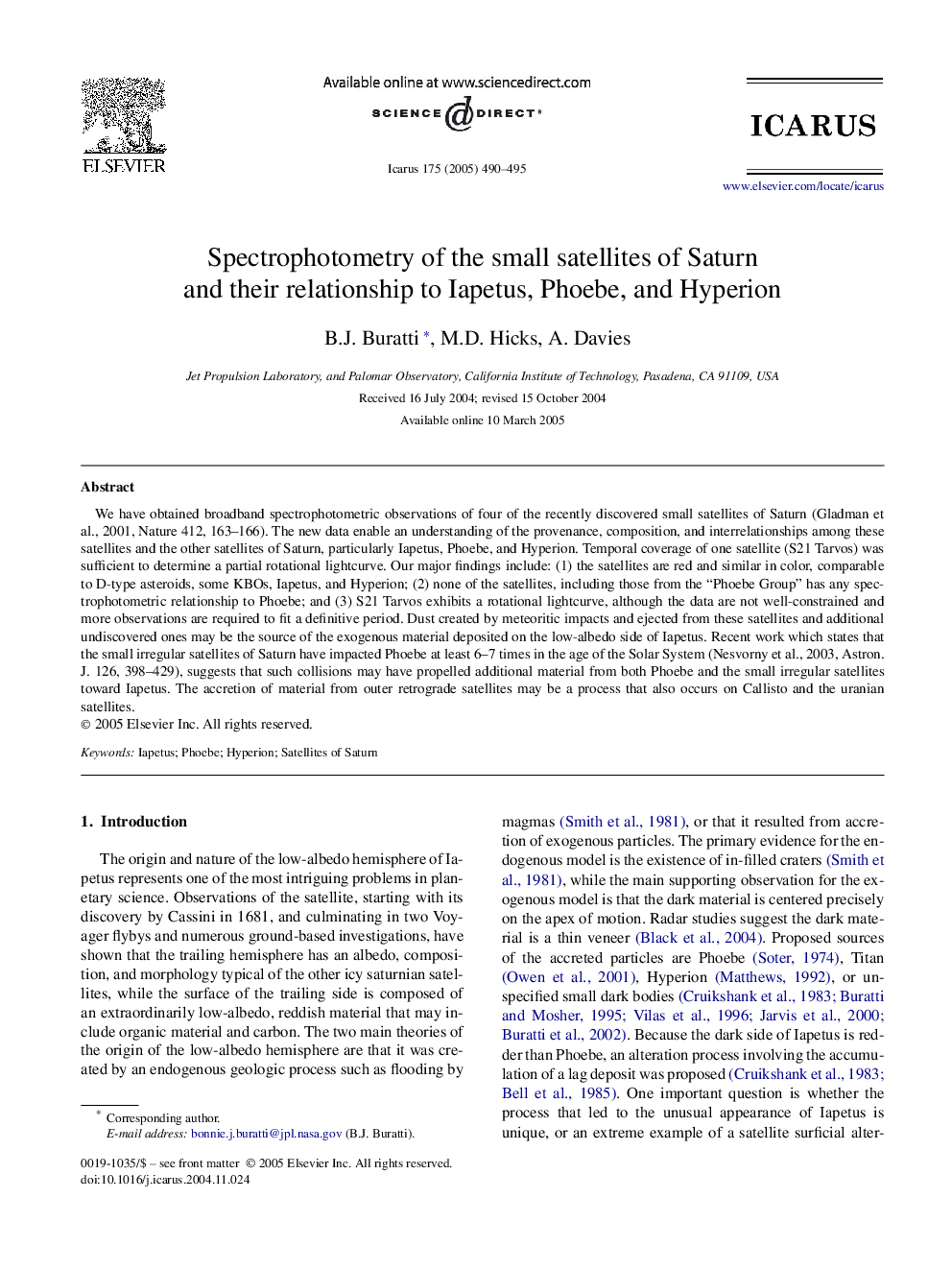| Article ID | Journal | Published Year | Pages | File Type |
|---|---|---|---|---|
| 10702067 | Icarus | 2005 | 6 Pages |
Abstract
We have obtained broadband spectrophotometric observations of four of the recently discovered small satellites of Saturn (Gladman et al., 2001, Nature 412, 163-166). The new data enable an understanding of the provenance, composition, and interrelationships among these satellites and the other satellites of Saturn, particularly Iapetus, Phoebe, and Hyperion. Temporal coverage of one satellite (S21 Tarvos) was sufficient to determine a partial rotational lightcurve. Our major findings include: (1) the satellites are red and similar in color, comparable to D-type asteroids, some KBOs, Iapetus, and Hyperion; (2) none of the satellites, including those from the “Phoebe Group” has any spectrophotometric relationship to Phoebe; and (3) S21 Tarvos exhibits a rotational lightcurve, although the data are not well-constrained and more observations are required to fit a definitive period. Dust created by meteoritic impacts and ejected from these satellites and additional undiscovered ones may be the source of the exogenous material deposited on the low-albedo side of Iapetus. Recent work which states that the small irregular satellites of Saturn have impacted Phoebe at least 6-7 times in the age of the Solar System (Nesvorny et al., 2003, Astron. J. 126, 398-429), suggests that such collisions may have propelled additional material from both Phoebe and the small irregular satellites toward Iapetus. The accretion of material from outer retrograde satellites may be a process that also occurs on Callisto and the uranian satellites.
Keywords
Related Topics
Physical Sciences and Engineering
Earth and Planetary Sciences
Space and Planetary Science
Authors
B.J. Buratti, M.D. Hicks, A. Davies,
